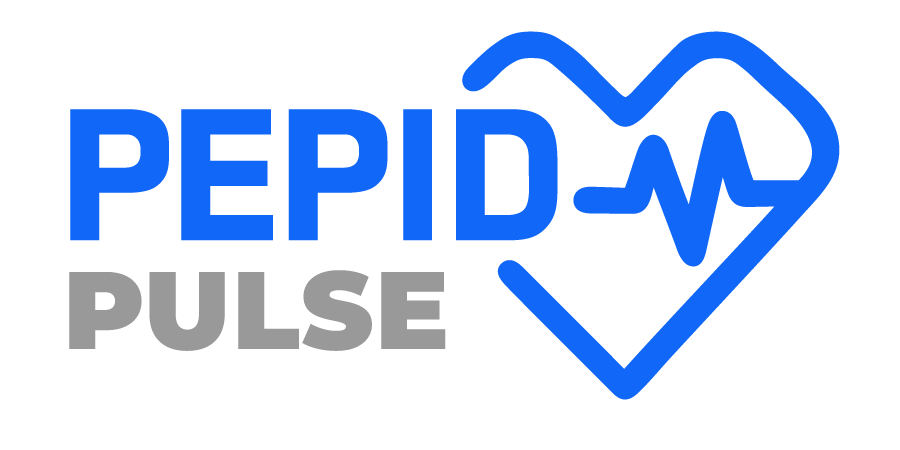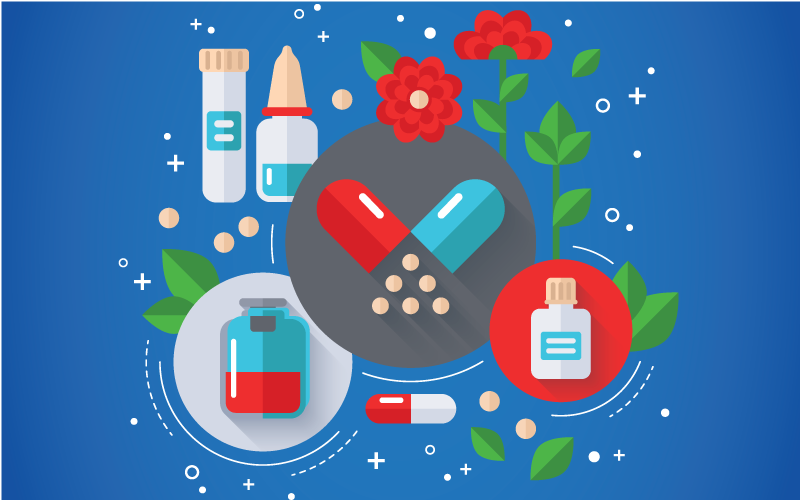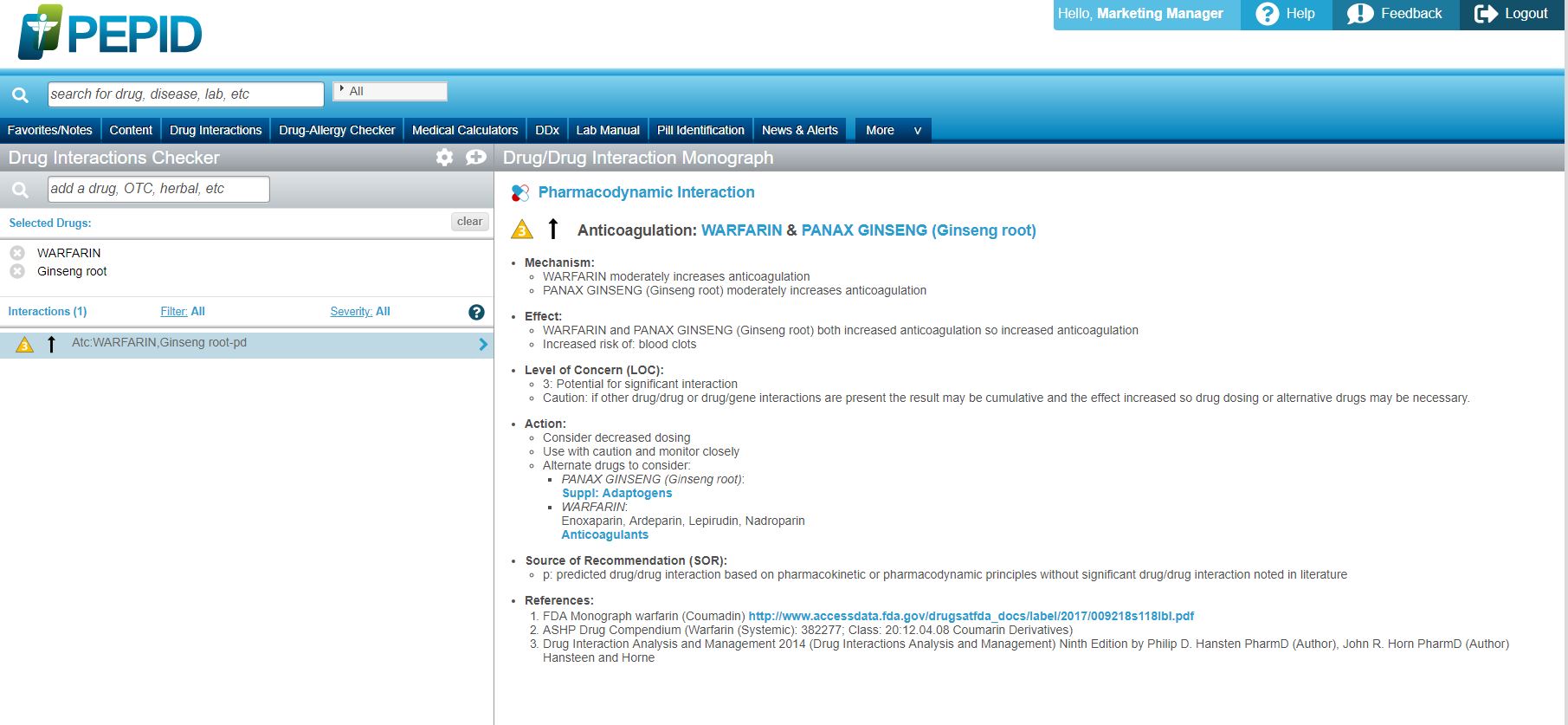Evidence that Adverse Drug Interactions Occur from Herbal-Drug Interactions and Non-Prescription Drug Interactions.
“Natural” is widely perceived by the public to ensure safety. However, studies show drug interactions with active pharmaceutical agents, and pharmacokinetics pose risks associated with taking concurrent herbal supplements and prescriptions. A study published January 2018, assessed the severity of adverse drug reactions (ADRs) occurring from herbal-drug interactions (HDI) in patients taking herbs and prescribed medications based on published evidence from PubMed, the Cochrane Library, Medline and Scopus. In their review forty-nine case reports and two observational studies with 15 cases of adverse drug reactions (ADRs) were recorded. 3
About 30% of the patients in the study were diagnosed with cardiovascular disease, 22.45% with cancer, and 16.32% renal transplants. Most patients were receiving warfarin, with alkylating agents and cyclosporine. ADRs were linked to herbal supplements, warranting the importance of doctor and patient awareness of the potential interactions between herbs and prescribed medicines. 3
The report states, “Patients may poorly respond to therapeutic agents or develop toxicity due to severe HDI, which in either scenario may increase the cost of treatment and/or lead to or prolong patient hospitalization.” 3
In a systematic review of studies regarding people ages 65 and older using concurrent prescription medicine with herbal medicinal products, evidence showed substantial potential risks in herb-drug interactions. According to the review, the most common prescription medicines taken with herbal medicinal products were antihypertensive drugs, β-blockers, diuretics, antihyperlipidemic agents, anticoagulants, analgesics, antihistamines, antidiabetics, antidepressants, and statins. Potential risks of bleeding due to the use of Ginkgo biloba, garlic or ginseng with aspirin or warfarin were the most reported herb-drug interactions. 2
It is important for healthcare professionals to ask patients about the herbal supplements and over the counter drugs they take, and to verify within a drug interaction checker to prevent adverse interactions when prescribing medication.17
The Growing Herbal Medicinal Products Industry Increases Importance of HDI Awareness and Checking
The Herbal Medicinal Products (HMP) industry is growing, with no signs of stopping. In 2012 The herbal product sales reached $5.6 billion. Within four years the HMP industry has climbed to 71.19 billion in 2016.7

One-half of the US population is taking dietary supplements.4 64% of Americans taking prescription medications are concurrently taking at least one dietary supplement. 17
The rate of children taking herbal supplements has nearly doubled in the past 20 years, according to a recent study.13 In 2003 3.7% of children were taking herbal supplements, and the number rose to 6.3% by 2014. 13 With the low cost of herbal medicines, changing views on health, and the booming HMP industry, an interaction checker that includes herbal supplements and nutritional elements has become a necessity for medical professionals. 7
Common Adverse Interactions:
There are many forms of interactions between herbal supplements, prescription drugs, and over the counter drugs. Here are a few of the more common.
- The herbal supplement goldenseal could increase drug levels in the body by slowing down the metabolism of other drugs to inactive substances 9
- St John’s Wort (SJW) is used to treat anxiety, depression, insomnia, and hemorrhoids among other things, but is known for decreasing the effects of drugs by speeding up metabolism in the body that change drugs into inactive substances which could lead to a 70% decrease in a drug’s effectiveness. 10 Hyperforin, one of the chief components of SJW, helps induction of the cytochrome p450 enzyme (CYP and P-glycoprotein transport (P-gp) which affects the pharmacokinetics of various drugs. This leads St. John’s Wort to affect many drugs,16 including:
- Anesthetics
- Anti-anxiety Drugs
- Anticoagulants
- Antidepressants
- Certain Cancer Drugs
- Cholesterol-Lowering Drugs (Statins)
- Diabetes Drugs
- Digoxin
- Drugs that suppress the Immune System (used to prevent rejection of transplanted organs)
- Drugs used to Prevent Seizure
- Drugs used to treat HIV Infection
- Fexofenadine
- Finasteride
- Ivabradine
- Methadone
- Nifedipine and Verapamil
- Omeprazole
- Oral Contraceptives
- Talinolol
- Theophylline and Voriconazole
- Aspirin and an assortment of Herbs Interact to Increase the Risk of Bleeding.
All of PEPID Suites include a drug interaction checker that includes herbal supplements, prescription medications, nutrition, food, and lifestyle choices. Here are 3 examples of herbal-drug interactions that may result in significant to potentially life-threatening interactions.
It is now more important than ever to check possible adverse reactions between herbal medicines, prescription drugs, and non-prescription drugs. One way to check this is with PEPID’s Drug Interaction Checker 10, included in all of PEPID’s Suites.
Reference and Further Reading:
- 6 Tips: How Herbs Can Interact With Medicines. (2015, September 16). Retrieved from https://nccih.nih.gov/health/tips/herb-drug
- Agbabiaka, T. B., Wider, B., Watson, L. K., & Goodman, C. (2017, December). Concurrent Use of Prescription Drugs and Herbal Medicinal Products in Older Adults: A Systematic Review. Retrieved from https://www.ncbi.nlm.nih.gov/pubmed/29196903
- Awortwe, C., Makiwane, M., Reuter, H., Muller, C., Louw, J., & Rosenkranz, B. (2018, April). Critical evaluation of causality assessment of herb-drug interactions in patients. Retrieved from https://www.ncbi.nlm.nih.gov/pubmed/29363155
- Bailey, R. L., Gahche, J. J., Lentino, C. V., Dwyer, J. T., Engel, J. S., Thomas, P. R., . . . Picciano, M. F. (2011, February). Retrieved from https://www.ncbi.nlm.nih.gov/pmc/articles/PMC3021445/
- Brantley, S. J., Argikar, A. A., Lin, Y. S., Nagar, S., & Paine, M. F. (2014, March). Retrieved from https://www.ncbi.nlm.nih.gov/pmc/articles/PMC3935140/
- Gahche, J., Bailey, R., Burt, V., Hughes, J., Yetley, E., Dwyer, J., . . . Sempos, C. (2011, April). Dietary supplement use among U.S. adults has increased since NHANES III (1988-1994). Retrieved from https://www.ncbi.nlm.nih.gov/pubmed/21592424
- Global Herbal Medicine Market Size, Value, 2014-2024 | Industry Report. (n.d.). Retrieved from https://www.hexaresearch.com/research-report/global-herbal-medicine-market
- Herb-Drug Interactions. (2018, February 13). Retrieved from https://nccih.nih.gov/health/providers/digest/herb-drug
- Know the Science: How Medications and Supplements Can Interact. (2018, March 11). Retrieved from https://nccih.nih.gov/health/know-science/how-medications-supplements-interact?nav=tw&page=3
- Know the Science: How Medications and Supplements Can Interact. (2018, March 11). Retrieved from https://nccih.nih.gov/health/know-science/how-medications-supplements-interact?nav=tw&page=4
- PEPID’s New Drug Interactions Checker [Advertisement]. (2017, December 4). Retrieved from https://www.youtube.com/watch?v=RU4OvYVixlU
- Qato, D. M., Alexander, G. C., Conti, R. M., Johnson, M., Schumm, P., & Lindau, S. T. (2008, December 24). Use of prescription and over-the-counter medications and dietary supplements among older adults in the United States. Retrieved from https://www.ncbi.nlm.nih.gov/pubmed/19109115/
- Qato, D. M. (2018, June 18). Prevalence of Dietary Supplement Use in US Children and Adolescents, 2003-2014. Retrieved from https://jamanetwork.com/journals/jamapediatrics/article-abstract/2685282?mod=article_inline
- Reddy, S. (2018, July 02). Do Dietary Supplements Help or Hurt Children? Retrieved from https://www.wsj.com/articles/more-children-are-taking-alternative-dietary-supplements-1530536937
- Roger, S. (2018, July 09). Herbal/Prescription Interaction Awareness Month: Come and Join. Retrieved from https://www.consumerhealthdigest.com/health-awareness/herbal-prescription-interaction-awareness-month.html
- Soleymani, S., Bahramsoltani, R., Rahimi, R., & Abdollahi, M. (2017, October). Clinical risks of St John’s Wort (Hypericum perforatum) co-administration. Retrieved from https://www.ncbi.nlm.nih.gov/pubmed/28885074
- Tarn, D. M., Guzmán, J. R., Good, J. S., Wenger, N. S., Coulter, I. D., & Paterniti, D. A. (2014, September). Retrieved from https://www.ncbi.nlm.nih.gov/pmc/articles/PMC4139527/



